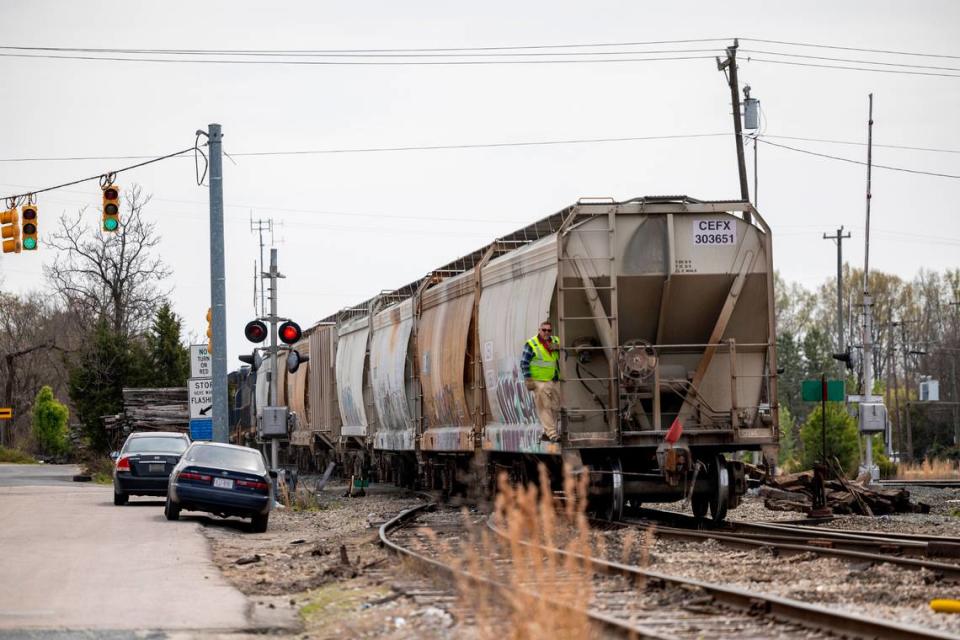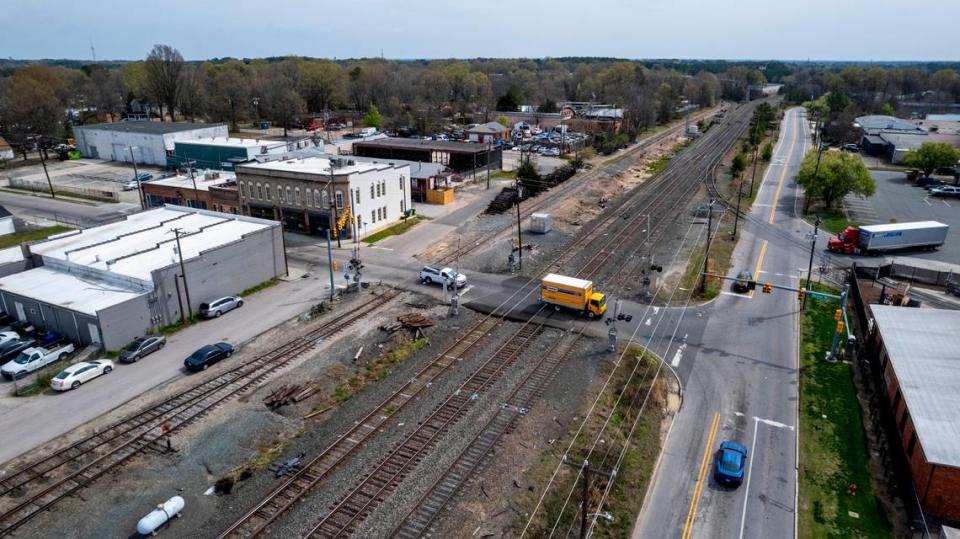These dangerous Durham railroad crossings could be eliminated, but it’s not that simple
The railroad crossing in East Durham where a man was killed when his car got stuck on the tracks earlier this month is one of three that state and local authorities are looking to close or replace because of safety issues.
Durham County and GoTriangle received a $1.2 million federal grant to help craft a plan for eliminating the at-grade crossings at Driver and Plum streets and the nearest one at Ellis Road. Congress appropriated another $850,000 for the project this month, and $600,000 will come from Durham’s local transit sales tax.
The impetus for the project is safety. In 25 years, there had been 19 crashes at those crossings, killing three people and injuring nine more, according to the county. Charles Hightower of Durham became the fourth fatality when his Audi sedan got caught between the crossing arms on Driver Street and was hit by an Amtrak train on March 14.

But safety isn’t the only issue to consider. Together, the three crossings are a lifeline between East Durham neighborhoods north and south of the tracks, providing key links with the Durham Freeway, Durham Technical Community College and businesses and schools on both sides.
“We don’t want the railroad to further create a barrier to transportation where one has to drive, walk, or bike far out of their way to cross,” Ellen Beckmann, the county transportation director, wrote in an email. “They are in a highly developed urban area with many pedestrians, cyclists, and transit users, and a connected roadway network is especially important to facilitating those trips.”
The 18-month study, which should begin later this year, will provide options for replacing the existing crossings with bridges or underpasses, either there or elsewhere along the corridor. Other possibilities include creating crossings exclusively for bicycles and pedestrians, Beckmann said.
And despite the fact that the grant comes from the Federal Railroad Administration’s Railroad Crossing Elimination Program, leaving the crossings as they are is still a possibility, according to Beckmann.
“It is possible that we recommend keeping the crossings open,” she wrote. “We intend to involve the community in the planning process, collect community, environmental, traffic, safety, etc. data, and evaluate trade-offs between options before making a final recommendation.”

Busy crossings in a dense urban area
East Durham grew up along the N.C. Railroad tracks, starting with the Durham Cotton Manufacturing Co. in the 1880s. Other factories and warehouses followed, along with homes and businesses in what became one of the city’s densest areas. Trestles carry the railroad over Alston Avenue, but the crossings east of there remain at grade level.
The Driver, Plum and Ellis crossings each have what’s known as a high “exposure index,” which is calculated by multiplying the number of passing trains by the number of cars that cross each day.
An exposure index of 30,000 is considered a minimum for replacing an at-grade crossing with a bridge or underpass. With 20 freight trains and 12 Amtrak trains traversing the corridor each day, the index was 41,600 at Plum Street, 195,200 at Driver Street and 204,800 at Ellis Road, according to a study done for GoTriangle in 2022.
The exposure index at these three crossings was already high more than a decade ago when the N.C. Department of Transportation and the City of Durham studied 18 crossings along the N.C. Railroad line in Durham. Despite the safety concerns, much of the feedback the city and state heard during the Durham Traffic Separation Study was about keeping the crossings open.
“To close off these access points would cripple the area financially,” one person wrote, according to a summary of comments published by the city. “The City of Durham is using significant financial resources to revitalize the Angier/Driver St. corridor, and to limit the access to the Durham Freeway would hurt our community and future business.”
Durham police are still investigating this month’s Driver Street crash and have not said how they think Hightower got trapped between the crossing arms. He had just turned from East Pettigrew Street onto Driver headed north shortly before 8:30 p.m. when the Piedmont train came through.
There are traffic lights on both sides of the crossing, at Pettigrew and East Peabody streets. The Pettigrew intersection is 40 feet from the tracks, while Peabody Street is within 20 feet.
Norfolk Southern uses that stretch of track as a switching yard, with trains stopping and starting and periodically blocking the Driver street crossing. Residents cite those blockages as a reason for keeping the nearby Plum Street crossing open.
The study will only produce recommendations. It will then be up to local governments and NCDOT to come up with the money to carry them out.
For its part, NCDOT said in a statement that it “supports all grade crossing safety efforts and looks forward to working with Durham County on identified and proposed solutions.”
NC Reality Check is an N&O series holding those in power accountable and shining a light on public issues that affect the Triangle or North Carolina. Have a suggestion for a future story? Email realitycheck@newsobserver.com.

